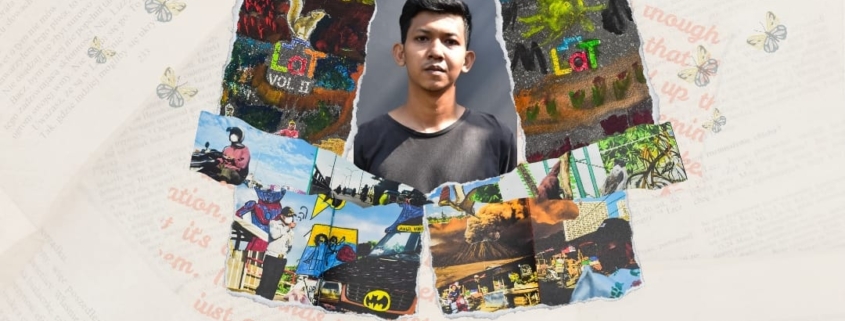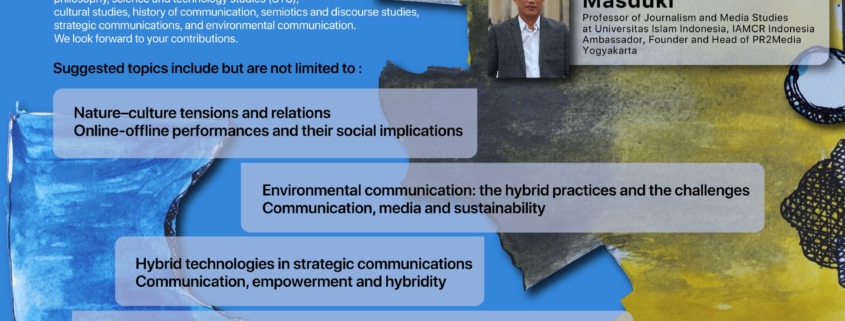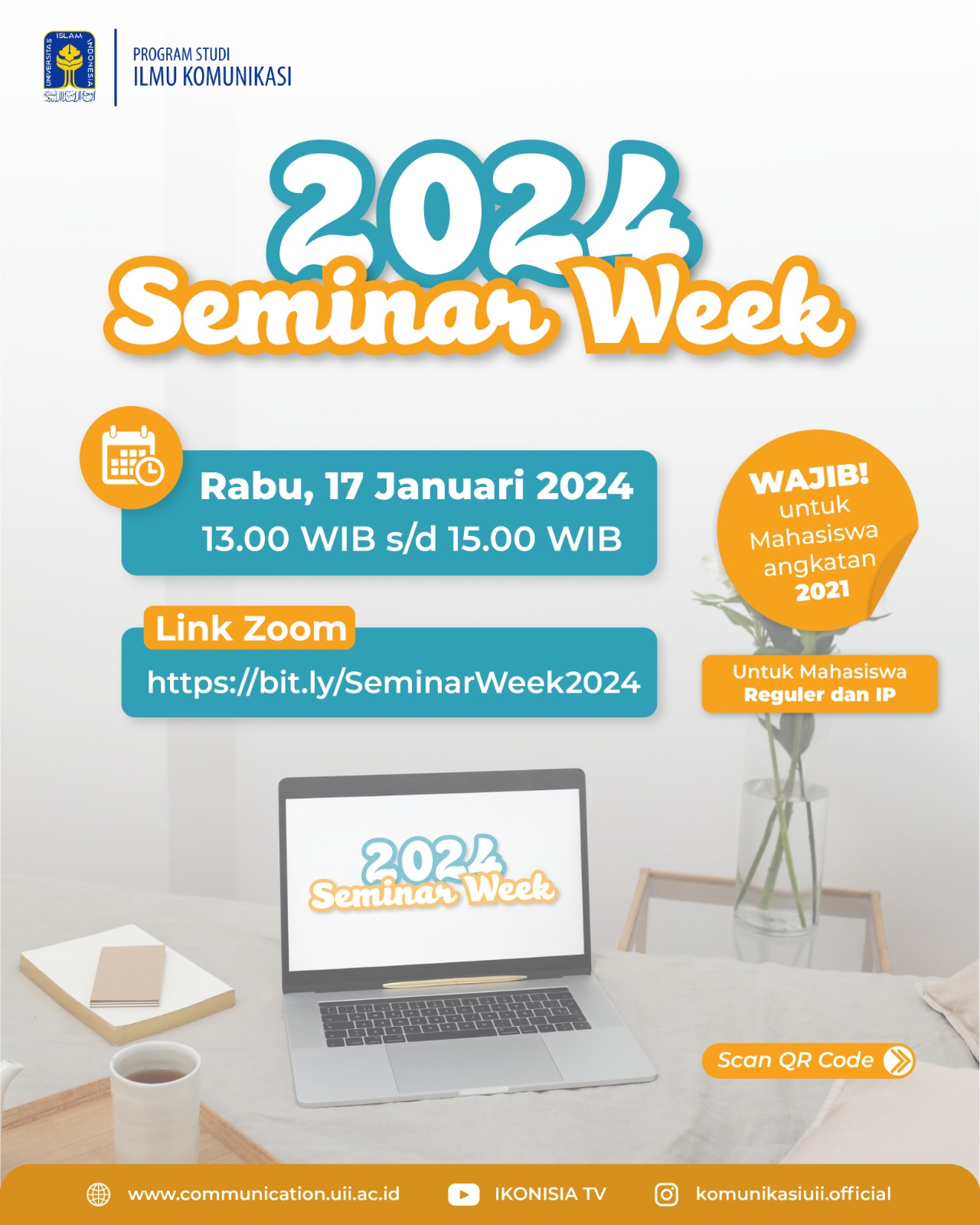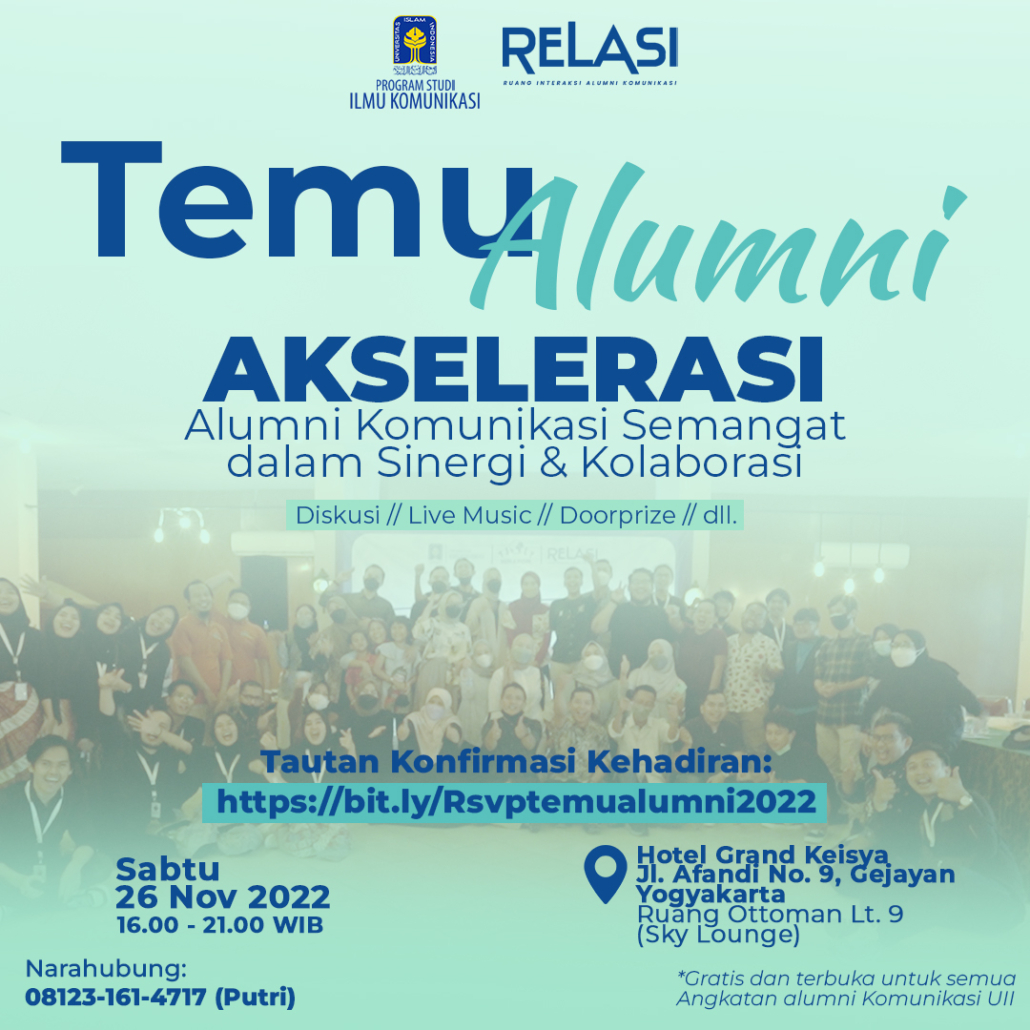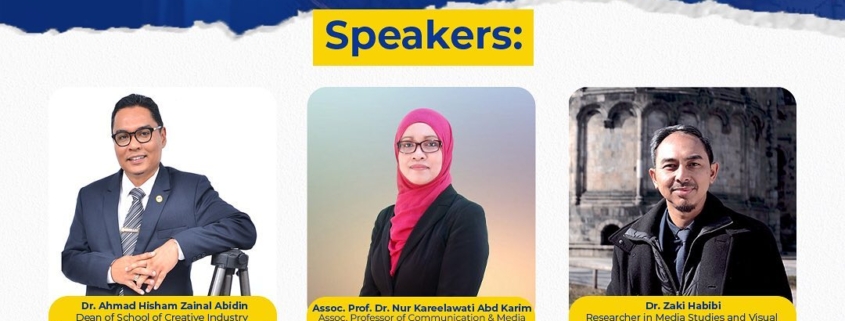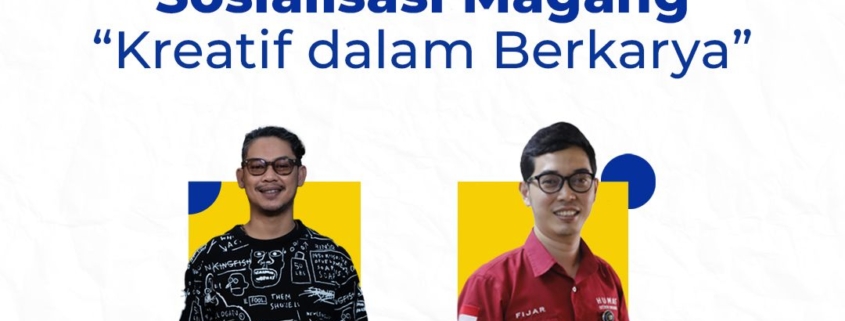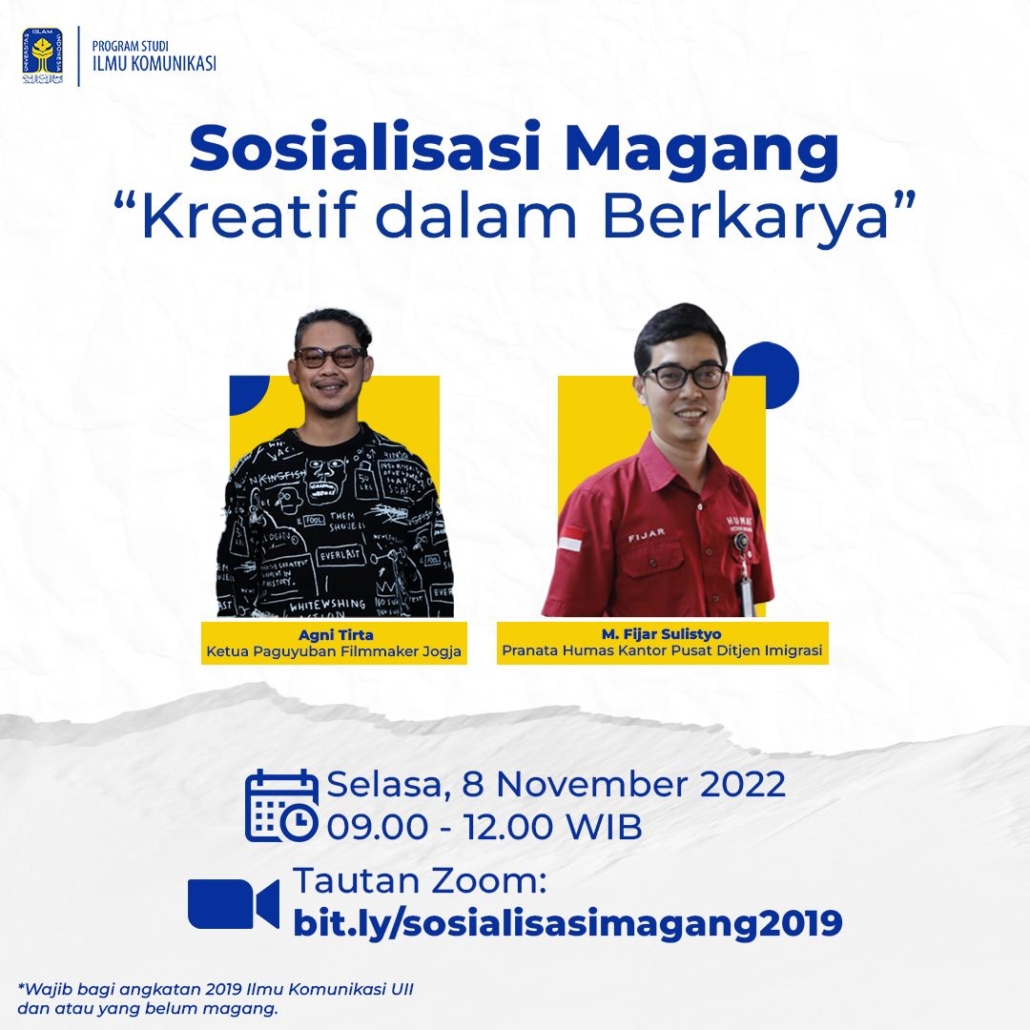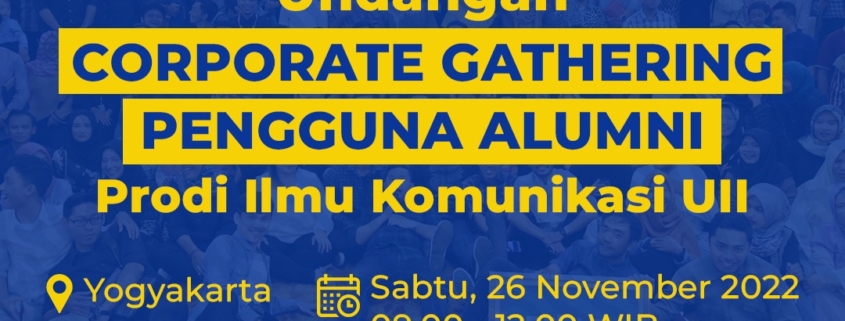The Conference on Communication, Culture, and Media Studies (CCCMS) is back as an onsite event this year in Yogyakarta, Indonesia, from August 27th to 29th, 2024.
Our main theme, “hybrid,” addresses contemporary challenges within digital and environmental ecosystems. This theme explores the ‘nature-culture’ dichotomy, as discussed by Bruno Latour and Donna Haraway, and examines ‘cultural hybridity’ in post-colonial societies, as proposed by Homi Bhabha.
We welcome diverse interpretations of this theme, spanning from theoretical perspectives, various empirical cases, sites or area-based studies, media forms, communicative and cultural practices, to socio-cultural dynamics.
CCCMS invites papers from around the globe and across various disciplines, including communication and media studies, sociology of media/communication, media anthropology, philosophy, science and technology studies (STS), cultural studies, history of communication, strategic communications, and environmental communication. We look forward to your contributions.
Suggested topics include but are not limited to:
- Nature–culture tension and relations
- Historical perspectives on hybridity in communication and media
- Communication and hybrid culture
- Popular culture and hybrid media
- Online-offline performances and its social implication
- Environmental communication: the hybrid practices and the challenges
- Communication, media and sustainability
- Hybrid energy transformation and the media role
- Hybrid technology in strategic communication
- Hybridity on IMC (integrated marketing communication)
- Communication, empowerment and hybridity
- Social activism through and in hybrid societies
- Digital journalism in hybrid newsroom and the keep-changing public values
- Digital divide, hybrid technology and socially-engaged public
- Posthuman and artificial intelligent (AI) studies
- Film, multi-platforms viewing practices, and hybrid media
- Visual culture and hybrid arts
- Creative media ecosystem: hybrid media and the cultural production
- Communicating space and place in cultural hybridity
- The city: hybrid culture, creativity and urban commons
- Crisis, risk, hazard and disaster in hybrid cultures
- More-than-human perspective in understanding hybridity of culture
Best Regards,
Chair of 7th CCCMS 2024
Department of Communications
Universitas Islam Indonesia
More information: https://conference.communication.uii.ac.id/

